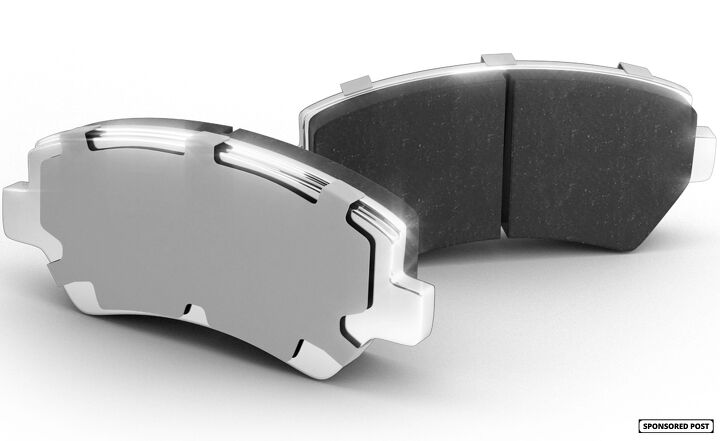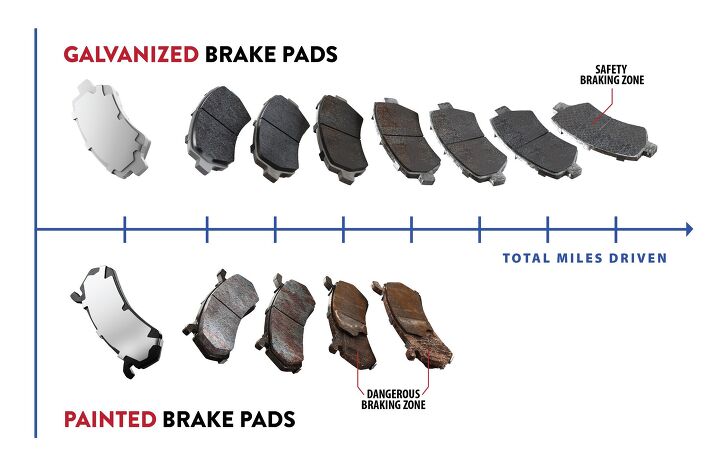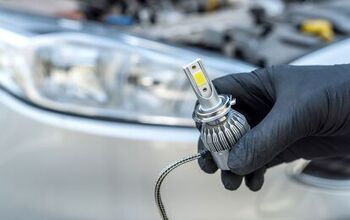How Much Do Brake Pads Cost? Here's Why Cheap Pads Cost More in the Long Run
Whether you’re a seasoned shade tree mechanic, or a newbie just looking to get your feet wet, brake pad replacement is one of the best maintenance procedures you can do yourself. All it takes is a jack, some jack stands, a few basic hand tools, and of course, your replacement pads and pad hardware. In just the span of an afternoon, you can take your car from squealing, ineffective braking to like-new stopping performance, and you can save a substantial chunk of money doing it.
How much you save over taking your car to the shop depends on a few factors, including how many of the required tools you already have access to, and how much you’re willing to spend on new pads. But just how much do brake pads cost? The truth is: it depends. We’ve partnered with the experts at NRS Brakes for a look at the various factors consumers need to take into consideration.
Here are three points to consider when it comes to purchasing a new set of brake pads:
- Brake pads are a crucial part of safe driving. Do you really want to bargain hunt?
- Opting for cheap pads can mean more frequent replacement.
- Premium construction, like galvanized brake pads, can actually save you money long-term.
How Much Do Brake Pads Cost?
Whatever your make and model, there is likely a wide range of brake pads available at all different price points. A typical mass-market car with standard-performance four-wheel disc brakes will usually have offerings running from $20 to $80 (or more) for a set of four pads – enough to address the brakes on one axle of the car. More enthusiast-focused cars with bigger calipers often won’t dip below $30 or $40 for a set of four pads, with options priced as high as $100 for conventional friction material formulations – or up to several hundred dollars for optional high-performance pads.
SEE ALSO: How Long Do Brake Pads Last?Those cheap, budget brake pads can seem like an attractive bargain to some shoppers. At a glance, it might not even be apparent what’s different between budget pads and some of the more premium options out there. They’re the same shape and size, a similar weight, and they use similar-looking friction material. Many of them even come from recognizable name brands.
SEE ALSO: Brake Pad Replacement Cost: How Much Can You Expect to Pay?Yet while that $20 pair of budget replacement brake pads might seem like a great deal, cheaping out on pads might end up costing more in the long run. For one things, your braking performance might suffer; as similar as the friction materials may look from pad to pad, testing shows that cheap pads often deliver far less friction than their more expensive counterparts. Their performance also typically drops off faster, as the pads heat up from heavy, repeated use. It might even require a harder pedal press to achieve the same deceleration, making the behavior of your brakes dangerously unpredictable.
The question of How much do brake pads cost? matters very little if they end up causing an accident. But even more likely is that those bargain brake pads will experience some sort of premature wear or failure, requiring replacement long before a better, more expensive set of pads likely would have, costing you more in the long run.
The Hidden Costs of Cheap Brake Pads
The simplest reason why you might pay more with a set of cheap pads is, once again, the quality of the friction material. With some exceptions, inexpensive brake pads tend to wear out quicker than more premium ones, giving you fewer months and fewer miles of stopping performance before wearing completely through the friction material.
Even where that’s not the case, there are differences in the construction and the quality of materials that can render those $20 brake pads virtually useless a lot sooner. Just like everything else on your car, rust is the enemy, and unfortunately, the North American aftermarket isn’t subject to any standards specifying what sorts of steel can and can’t be used in replacement brake pads. Quite often, those budget pads are only “budget” because the backing plates contain low-quality black steel that’s susceptible to accelerated rust buildup.
SEE ALSO: Rust on Brakes: Does it Matter?That rust buildup can be responsible for a number of failure modes. At best, this means rendering the pad junk. At worst, it can cause excessive noise, impaired braking performance, and even damage to the rotor. Rust can drive a wedge between the friction material and the backing plate via a process called “rust jacking,” causing the pad edge to lift and even separate from the backing resulting in some nasty, unsavory noises, and potentially compromising braking performance and making your car unstable under braking.
That phenomenon is called “delamination,” and making the problem worse is that most budget pads attach the friction material to the backing plate using an adhesive rather than a mechanical connection. In the worst cases, delamination results in substantial chunks of pad friction material being snapped off the brake pad, leaving you with a fraction of your original brake pad surface area and causing the caliper to squeeze unevenly, again causing instability and compromised braking effectiveness. Under these conditions, the shims on the backsides of the pads can also migrate and make contact with the rotor, requiring resurfacing or replacement.
The good news is that the risk of experiencing one of these failure modes can often be mitigated by selecting a premium, higher-priced brake pad—especially one that’s galvanized.
Why Galvanized Brake Pads?
Galvanization is the process of treating ferrous metals like steel to give it a protective, rust-resistant zinc coating. Chances are pretty good that your vehicle’s body panels are made from galvanized steel, giving your doors, fenders, decklid, and other parts an extra layer of defense beneath the paint and primer. Galvanized pads apply this treatment procedure to the pad backing plates, giving them far superior rust-resistance than comparable painted pads.
The benefits here are obvious: less rust for the life of the brake pads, lessening the risk of premature failure through rust jacking or delamination. For this reason, galvanized brake pads from an aftermarket manufacturer like NRS Brakes consistently last substantially longer than competing pads, meaning that barring any extraordinary circumstances, they’ll stay intact for the long-haul – until the friction material is effectively used up. Helping NRS Brakes pads in this regard is their patented SHARK Metal Technology, which uses an array of small metal “teeth” to affix the friction material to the backing plate for a strong, reliable bond, a far cry from the failure-prone adhesive found on budget brake pad options.
SEE ALSO: What is the Best Brake Pad Material?The Verdict
So, how much do brake pads cost, really? There’s much more to it than the simple $20 to $100 per axle swing that most vehicle owners are liable to encounter, and buying the wrong pads can turn into a costly mistake later on. The bottom line is: as with most things, you get what you pay for. And when it comes to critical safety equipment like brakes, spending a bit more for premium galvanized pads can be pay off in the long run.
For more on NRS Brakes and the company’s galvanized brake pads, click here.
Lead photo: By Fusionstudio / Shutterstock.comMore by AutoGuide.com Staff


































Comments
Join the conversation